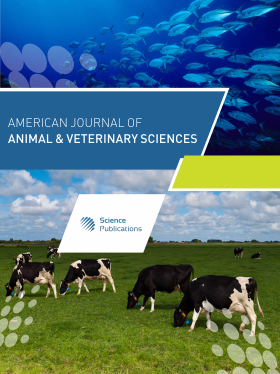ENTERIC PATHOGENS OF DOGS AND CATS WITH PUBLIC HEALTH IMPLICATIONS
- 1 University of Thessaly, Greece
- 2 Technological Educational Institute of Larissa, Greece
- 3 National School of Public Health, Greece
Abstract
Dogs and cats play an important role in modern society, enhancing the psychological and physiological well-being of many people. However, there are well-documented health risks associated with human animal interactions. More specifically, enteric pathogens of zoonotic risk which are transmitted by feces of dogs and cats can be grouped as follows: (a) Parasites such as Toxocara canis, T. cati, Ancylostoma sp, Uncinaria sp, Strongyloides stercoralis, Echinococcus granulosus, E. multilocularis and Dipylidium caninum (b) Protozoa including Toxoplasma gondii, Giardia duodenalis and Cryptosporidium spp. (c) Bacteria of the genera Clostridium, Campylobacter, Salmonella, Escherichia, Yersinia and Helicobacter and (d) Viruses mainly Rotaviruses and Coronaviruses. Among them, Salmonella, Campylobacter, Rotaviruses, Toxoplasma gondii, Echinococcus have been reported to be of considerable importance for many countries including Greece. Even though official records of the cases in humans and livestock in Greece continuously decline, cystic echinococcosis is considered to be a serious problem for public health and livestock economy. Regarding other parasites, the overall prevalence of parasitism was 26% in owned shepherd and hunting dogs examined in Serres. Furthermore, seroepidemiological studies revealed the presence of antibodies against T. gondii in a considerable percentage of hospitalized children. Rotaviruses were confirmed as a major cause of acute gastroenteritis in children. Finally, bacterial zoonotic enteropathogens were identified in a notable number of pediatric cases. Most of these zoonoses are associated with the exposure of immunodeficient people or children to pets and/or conditions of poor hygiene. Studies on the presence of all these pathogens in animals are required to identify the extent of problem, to define control strategies and evaluate their effectiveness.
DOI: https://doi.org/10.3844/ajavsp.2014.84.94

- 6,518 Views
- 5,795 Downloads
- 7 Citations
Download
Keywords
- Dog
- Cat
- Enteropathogens
- Public Health
- Zoonoses
